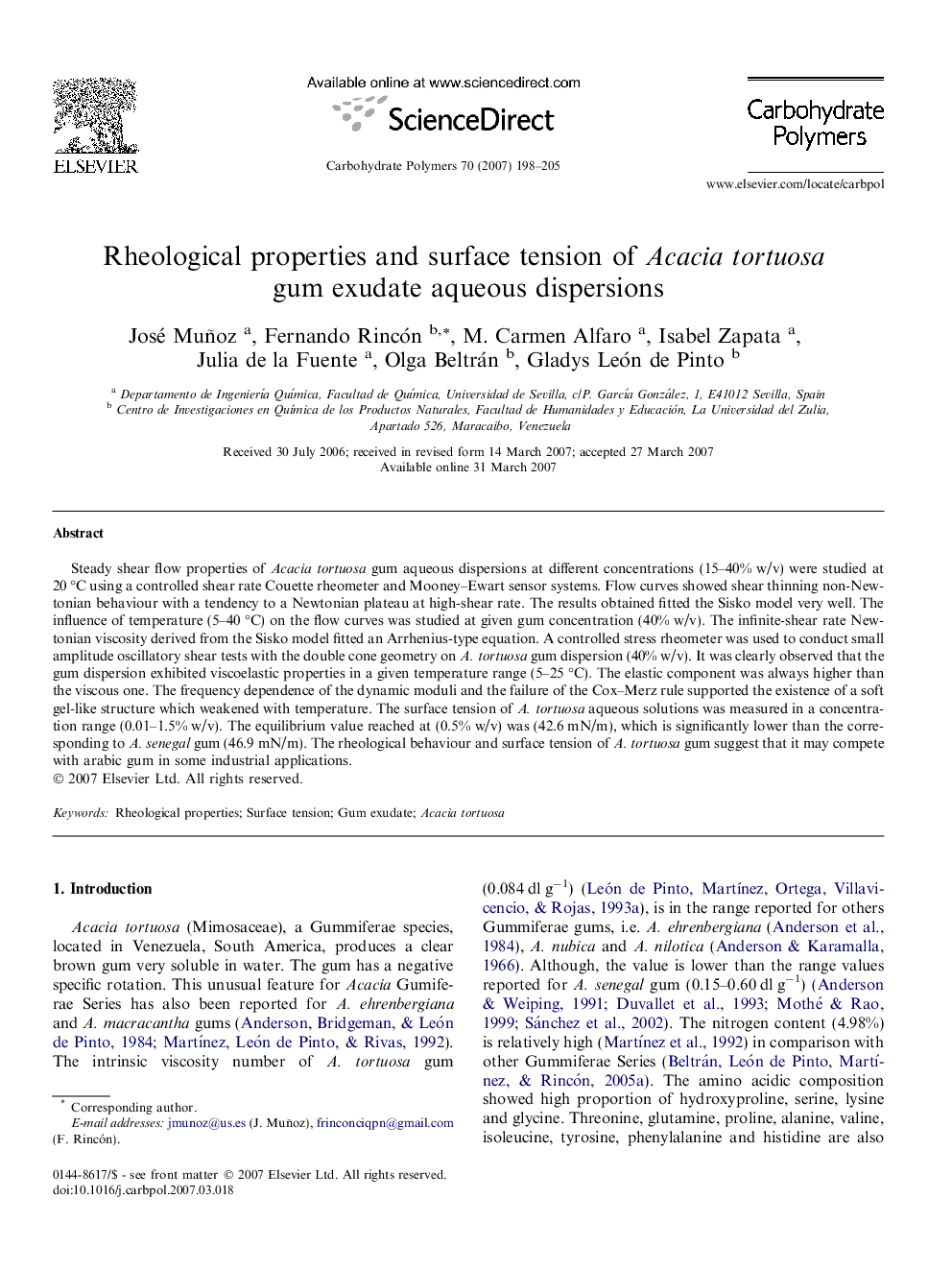| Article ID | Journal | Published Year | Pages | File Type |
|---|---|---|---|---|
| 1384864 | Carbohydrate Polymers | 2007 | 8 Pages |
Steady shear flow properties of Acacia tortuosa gum aqueous dispersions at different concentrations (15–40% w/v) were studied at 20 °C using a controlled shear rate Couette rheometer and Mooney–Ewart sensor systems. Flow curves showed shear thinning non-Newtonian behaviour with a tendency to a Newtonian plateau at high-shear rate. The results obtained fitted the Sisko model very well. The influence of temperature (5–40 °C) on the flow curves was studied at given gum concentration (40% w/v). The infinite-shear rate Newtonian viscosity derived from the Sisko model fitted an Arrhenius-type equation. A controlled stress rheometer was used to conduct small amplitude oscillatory shear tests with the double cone geometry on A. tortuosa gum dispersion (40% w/v). It was clearly observed that the gum dispersion exhibited viscoelastic properties in a given temperature range (5–25 °C). The elastic component was always higher than the viscous one. The frequency dependence of the dynamic moduli and the failure of the Cox–Merz rule supported the existence of a soft gel-like structure which weakened with temperature. The surface tension of A. tortuosa aqueous solutions was measured in a concentration range (0.01–1.5% w/v). The equilibrium value reached at (0.5% w/v) was (42.6 mN/m), which is significantly lower than the corresponding to A. senegal gum (46.9 mN/m). The rheological behaviour and surface tension of A. tortuosa gum suggest that it may compete with arabic gum in some industrial applications.
